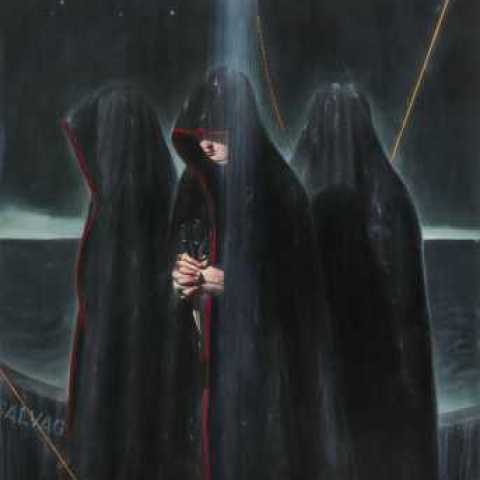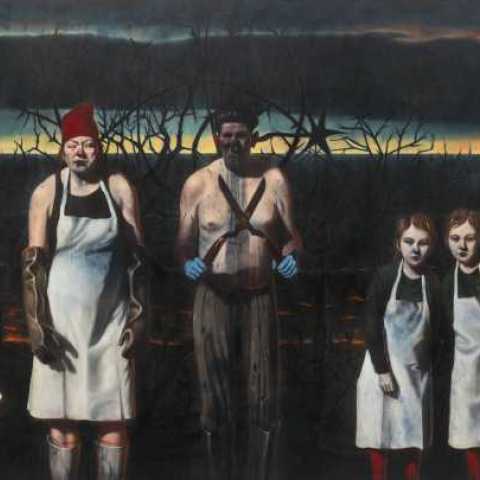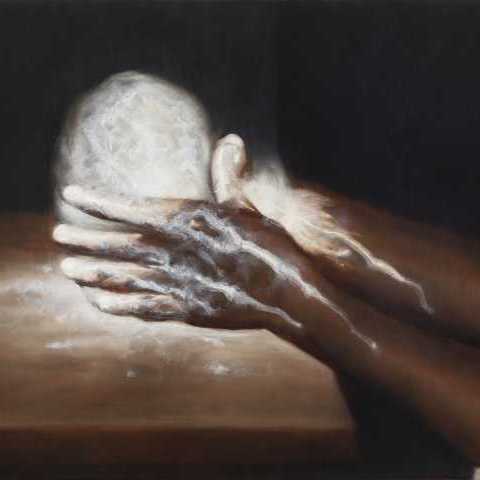Flowers Kingsland Road
82 Kingsland Rd
London
E2 8DP
United Kingdom





Flowers Gallery is delighted to present an exhibition of paintings by Scottish artist Ken Currie, featuring a new body of work connecting stories through the sea. In these paintings, narratives from Ancient Greece interlock with contemporary seafaring tales from the Outer Hebrides, while their vast horizons stretch to traverse the passages in between.
Large-scale paintings such as The Argonauts depict ideas of conquest, featuring scenes of brutality and a sky dramatically lit by the trails of falling missiles. Widening out across all three panels of the triptych, the painting resembles a stage set, in which each group of characters engage in symbolic actions with references to both the Argonautic voyage and the Oresteia. The narrative, however, is disrupted by shifts in the alignment of the scene where the panels meet, splicing apart the continuity of time and space as though referring to a cinematic jump cut. These glitches point us towards the dreamlike qualities of Currie’s paintings, in which the ambiguity of their storytelling leaves room for the viewer to read their own interpretation of the opposing acts of creation and destruction.
The painting Black Boat refers to the poem by Scottish Gaelic poet Sorley MacLean of the same name. In this triptych, the middle panel depicts a scene of distress, in which a crew of modern-day fishermen suffer alongside their haul on rough waters. The flanking panels portray solemn shrouded female figures, recalling the Fates (from Greek mythology), who appear to signal the loss of life on the sea. The curve of the hull of the boat here is repeated in all three panels of the triptych, creating a rolling waveform that amplifies a sense of nausea; meanwhile, the rhythm of the painting is firmly anchored by the jagged path of fishing lines, their structural vectors suggesting a constellation by which to navigate.
The works in Black Boat appear themselves to have been subjected to the ravages of the coastal Hebridean environment through the intricate and highly controlled manipulation of their painterly surfaces. A bloom often emerges as though the paintings have been patinated by the elements or illuminated by the spectral glow of phosphorescence. The resulting sensation of the passage of time echoes the hardships of a landscape Currie describes as “steeped in tragedy.” He says, “This contrast between beauty and tragedy is there all the time.”
For more information and images please contact [email protected] / 020 7920 7777
